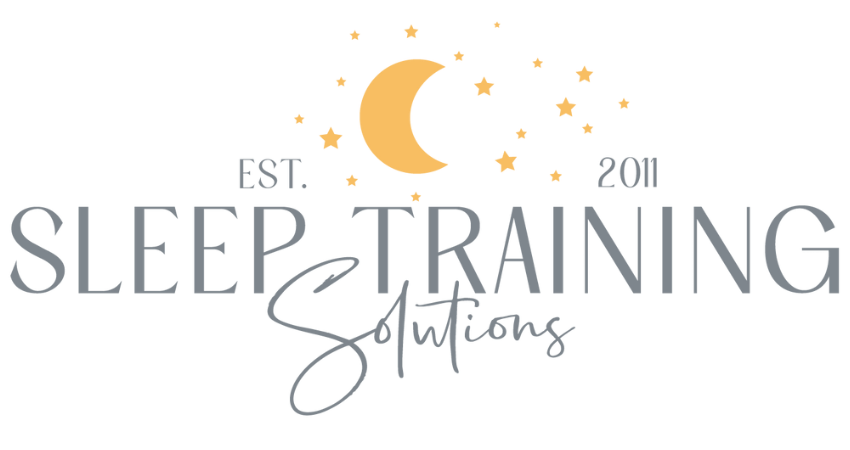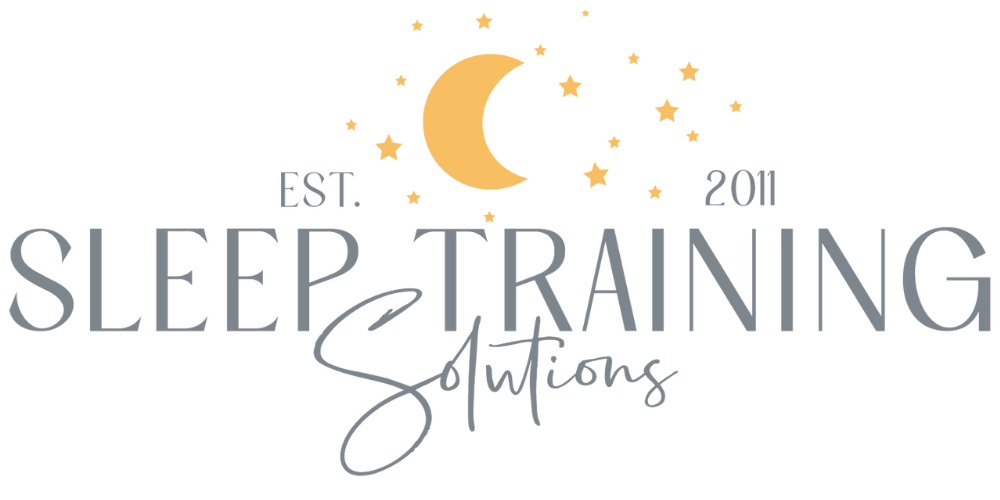4 month sleep regression - is it real and what can you do about it?
If you have a baby younger than 4 months, you may be wondering if the 4 month sleep regression is real and something you should be worried about and somehow prepare for! Or may you have a baby who is around 4 months old who was sleeping well and practically overnight, your baby’s sleep went downhill quickly!
I’m here to tell you that the 4 month sleep regression is real...and it’s normal. It means your baby is developing, and that’s a good thing!
Why does the 4 Month Sleep Regression Happen?
When babies reach 4 months (16 weeks from due date), sleep patterns shift from the 2-stage newborn sleep (REM vs non-REM) to 4-stage sleep (Stage 1: Drowsy, Stage 2: Light sleep, Stage 3: Deep sleep, Stage 4: REM/dreaming).
Around that time, babies are also becoming more aware of their surroundings, may be going through a growth spurt and are learning so many new skills every day and milestones like rolling may be right around the corner! That’s a lot of new stuff for a tiny human to adjust to!
What are some signs that my baby is going through the 4 Month Sleep Regression?
Just because it's called the 4 month sleep regression doesn't necessarily mean it'll happen on the exact day your baby hits the 4 month mark! Some babies go through it as early as 13-14 weeks. But generally it's closer to 16 weeks. Remember that those ages are from due date, not necessarily birth date.
Some signs that you’ve hit the 4 month sleep regression are:
Increased night wakeups – either the total number of wakeups or the duration is longer
It’s harder for your baby to settle for a nap or naps are getting shorter
Increased crabbiness/fussiness during the day – just not acting like his or her “normal” self
Change in appetite – either eating a lot more lately or more distracted during feeds and not eating as much/having more “snack feeds”
Remember that changes in sleep during a regression last less than 2 weeks. If you’re still dealing with these behaviors a couple months down the road, the temporary 4 month sleep regression has now become a habit!
How long does the 4 Month Sleep Regression last?
That depends. If your baby had good sleep skills prior, this should be more of a blip that lasts less than two weeks weeks or you may not notice much of a change around your child’s sleep at all!
If your baby goes into the 4 month sleep regression still needing sleep props like feeding or rocking to sleep, the pacifier or motion to fall asleep, then the dependency on those will only get stronger as you go through this regression. In that case, now would be the best time to choose a sleep training method and have a plan to start teaching your baby to fall asleep independently.
Thinking about starting sleep training? Download your free PDF to help set you up for success!
How to get through the 4 Month Sleep Regression
Here are 5 tips to help you get through the 4 month regression:
Get rid of the sleep props and put your baby in the crib awake
If that sounds completely impossible, I get it! But it's so important to having a baby who sleeps well.When babies rely on a parent to get to sleep – feeding or rocking to sleep, the pacifier, being in the swing/stroller/car for naps, etc. - they never get the opportunity to fall asleep independently. Then when the baby wakes up in the middle of the night or from a short nap, he needs you to recreate how he originally fell asleep. Much better to teach him how to go from Point A: Awake to Point B: Asleep 100% on his own so when he does wake, he knows where he is and can self-soothe back to sleep.
Note: If your baby is already drowsy (stage 1 sleep) when you're putting him in the crib, then he isn't falling asleep independently!Practice rolling A LOT during awake times
Around this age, babies may start rolling. We want to practice and master this skill outside the crib so they aren’t trying to do that when they’re supposed to be sleeping!Get rid of the swaddle
Now that your baby is closer to rolling, we don’t want her to roll over in a swaddle for safety reasons! Now is the time to transition to a regular sleepsack – no swaddle flaps, no weighted fabric, just a simple wearable blanket!If you’re concerned about your baby’s strong startle reflex, just know that you need to give her an opportunity to adjust to being free of the swaddle. If you want a transitional piece, you can try the Zipadee Zip which can be used for a short time after removing the swaddle, but then I would transition to a sleep sack so your baby’s hands are free and can have the ability to suck on her fingers/thumb to self-soothe.
Try to develop a more consistent routine of naps in the crib instead of on-the-go
Babies sleep so much better in a dark room, on a flat surface without motion. Because they should still be getting four naps each day at this age, it’s not imperative that all of them are in the crib. I would suggest that 2-3 naps be in the crib, with the first nap of the day being the most important one to be in the crib. If you notice your baby sleeps better when most (all) naps are at home in the crib, then you can adjust how often you offer naps on-the-go.Don’t backslide
If your baby was only getting up once per night for a feed, but is now waking up four times each night, your baby does not now need to be fed four times in the middle of the night. If you had gotten rid of the pacifier before 4 months, don’t reintroduce it now. Whatever positive gains you’ve made prior to the regression you should make every attempt to continue and not slide backwards!Regarding feeding, you'll want to make sure your baby is getting full feeds during the day and may eat more than normal. Increasing day feeds is great. Increasing night feeds means your baby is using the multiple feeds to pacify back to sleep! That is not what what we want to see :)
Remember: the 4 month sleep regression is normal and temporary. It may be a brief and easy experience or it may completely throw your child's sleep into a whirlwind of crazy! My advice is don't let the 4 month sleep regression become a habit.
If you need guidance and someone to give you the exact steps to get your baby to sleep, I'm here to help. You can schedule an evaluation call here and within the week, you'll start seeing some great progress!
Related Posts:
This post is for informational purposes only and may not be the best fit for you, your child and/or your personal situation. It shall not be construed as medical advice. The information and education provided here is not intended or implied to supplement or replace professional medical treatment, advice, and/or diagnosis. Always check with your child’s physician or medical professional before trying or implementing any information read here.






